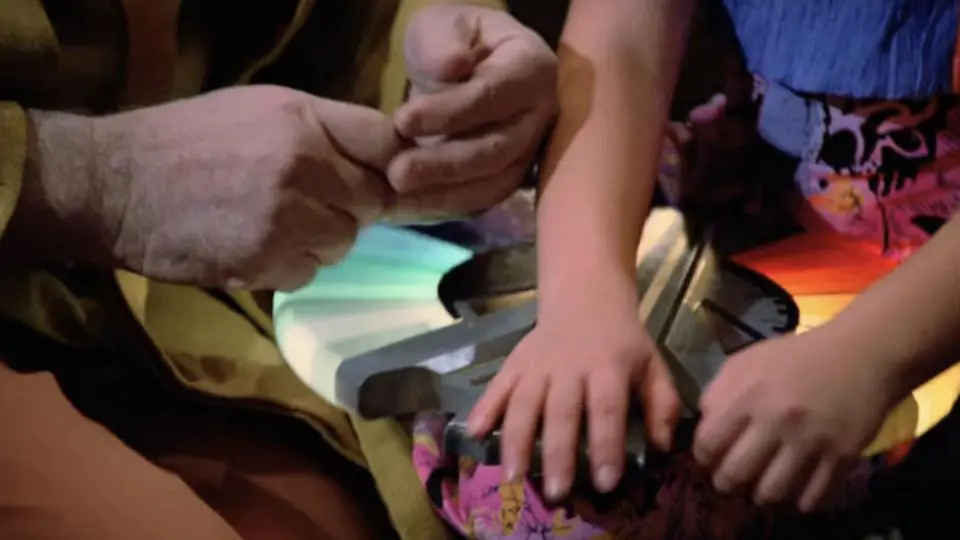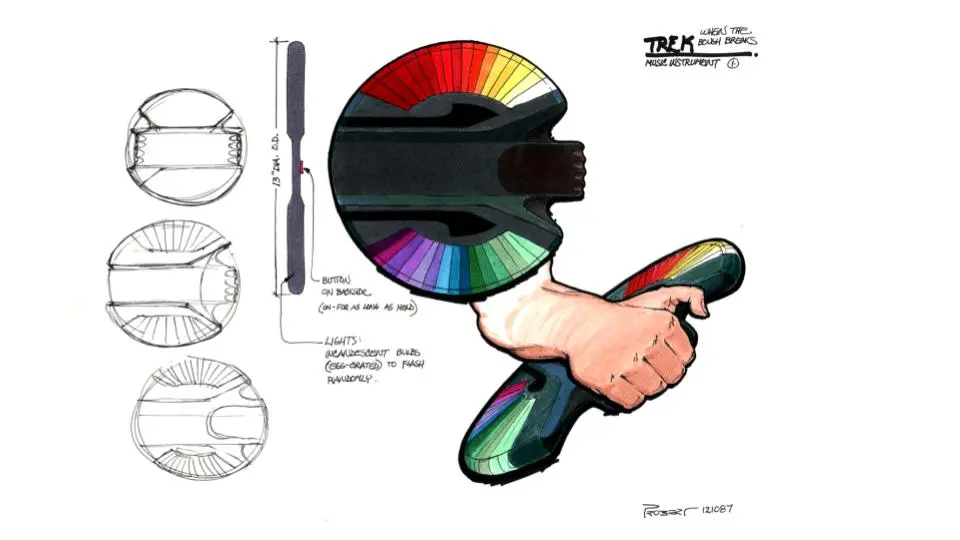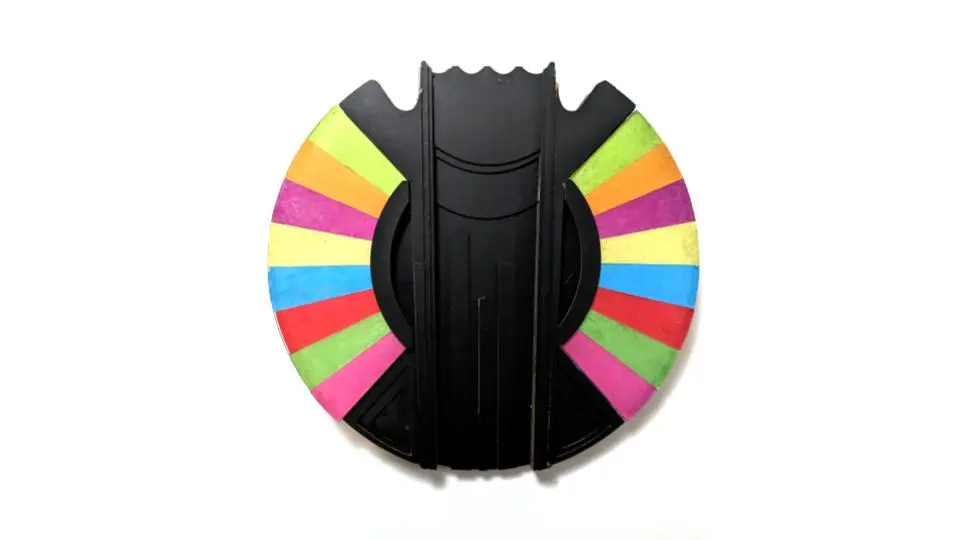The Star Trek Instrument
Using visions of the future to imagine new ways of designing instruments today

Project description:
As an exercise in making design choices, I recreated an instrument from Star Trek: The Next Generation and made it work, staying as faithful as I could to the original intentions of its role as a storytelling device.
Watch my keynote talk at the Audio Developer Conference about this project here.
Listen to a feature on this instrument by the Hyperfixed podcast here.
Read the research paper I published about this process here.
Role:
Designer; fabricator; electronic engineering; embedded programming
Introduction
Season 1, Episode 16 of Star Trek: The Next Generation features a beautiful instrument that appears for only four tantalizing seconds, and I couldn't stop thinking about it. In 2020, while rewatching the entirety of Star Trek, I found myself captivated by this light-up disc that translates thoughts to sound. When a girl in the episode calmly places her hands on the disc it plays twinkly sounds, but when she gets anxious it makes a burst of horrible noise.
Unlike other Trek instruments that tend to be a bit ridiculous, this one seemed uniquely beautiful and thoughtfully designed. I set out to find who created it, which started a journey of recreating this imaginary instrument and making it work as intended.
The Aldean Instrument
The instrument is played by laying hands on it, with light-up sides and a mesmerizing round shape. I found it fascinating not just for its brief screen time, but because it seemed like genuine thought had gone into its design and function.


Finding the designer
After researching musical instruments in Star Trek, I discovered this was the only one with a design credit: Andrew Probert. Andrew is a prolific science fiction production designer who's worked on everything from the Enterprise bridge to the DeLorean in Back to the Future. When I emailed him, he responded immediately, saying he couldn't remember the details but dug out his original production sketch for me:

The sketch was so gloriously beautiful that I couldn't resist building it. I had so many questions that could only be answered by making it real: How would I achieve the slow awakening and require calmness? How would I build that shape? What does "translating moods" even mean?
Fabrication
I started with the instrument body, prototyping 3D shapes by sandwiching together precisely laser-cut paper layers, which is a gradual, hands-on process I use a lot because it allows adjustments throughout. After a few days with a laser cutter and some cut-and-paste circuitry, I had something ready for a sensing system.

Making it translate thoughts
The biggest question was how to make this instrument "translate thoughts" using only touch, just like in the show. This is where being led by the original's storytelling—rather than available technology—became crucial.
I realized the instrument needed to sense two things: how agitated the player was (through movement) and how tense they were (through grip pressure). An accelerometer could detect sudden movements that would trigger noise bursts, while pressure sensors could measure grip intensity to determine the player's emotional state.
I used a Bela Mini for sensing and sound processing, with a Trill Bar sensor embedded on the underside to detect when someone's hand was on the instrument and how hard they were gripping.
Making the sounds
I wanted to faithfully reproduce the show's sound design, which was a basic four-part major chord harmony. I recreated the sparkly sound in Ableton Live, with each harmony part as a separate sample, plus a burst of noise.
When held gently without sudden movements, the instrument can play. As the player places fingers over its edge, each of four fingers triggers one harmony part. The harder the finger presses, the louder that voice becomes. Any sudden jarring movements, and the music becomes a burst of noise.
That's all this instrument needed.
The result
The Audio Developer Conference gave me the opportunity to finish this project as part of my keynote at ADC 2022. Watch it below:
The instrument has since been featured on Chris Noessel's SciFiInterfaces.com and the Hyperfixed podcast. I also published a research paper on the process at the New Interfaces for Musical Expression conference in 2023.
Reflections
This process brought me up close and personal with two vital lessons:
1. Working backwards from story rather than technology provided a fresh design perspective. Instead of worrying about technical complexity, I was guided by what the instrument needed to do, say, and mean. This made the technical aspects much simpler and helped me work artistic muscles that aren't always active when designing technology.
2. The cultural life of instruments matters as much as their technical specs. The overwhelming interest in this simple instrument showed me that instruments aren't just tangles of sensors and computers; they have an active cultural role and important life of their own.
Bringing imaginary things into reality offers fresh perspective whether designing fantastical or earthly interfaces. The Aldean instrument continues to function and enchant people, proving that sometimes the most powerful technology serves the simplest, most human purposes.
See More